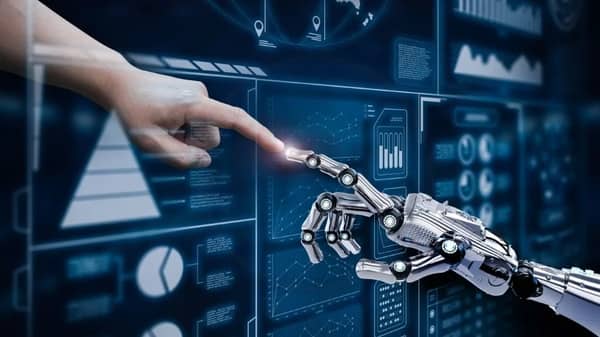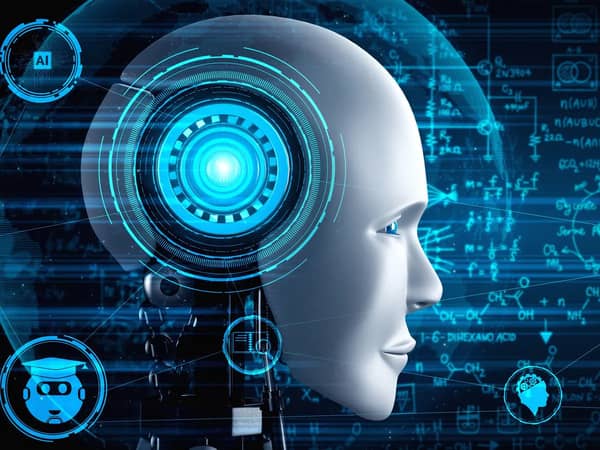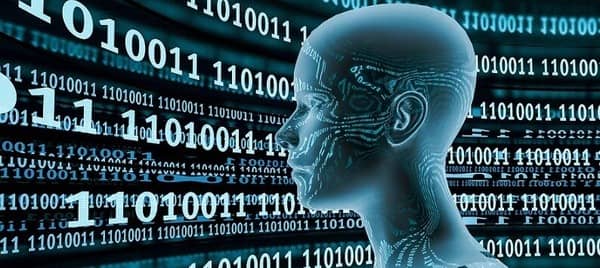
What Is a Spatial Computer?
October 15, 2024
What Is Data Degradation?
October 28, 2024On the Page…
- How Does Artificial Intelligence Learn?
- What Is Supervised Learning in AI?
- What Is the Human Role in Supervised Learning?
- What Is Unsupervised Learning?
- What Is Reinforcement Learning?
- What Are the Other Approaches to AI Learning?
- Conclusion
In today’s technological era, understanding the nuances of artificial intelligence and its fundamental learning mechanisms is important. From e-commerce to healthcare, AI’s influence is growing, anchored by machine learning’s foundational idea that with the right data, machines can learn similarly to humans. We look into the various learning models within AI and their significance in real-world applications.
How Does Artificial Intelligence Learn?
The foundation of AI is rooted in the potential of replicating human intelligence within machines. While we’re far from achieving a complete human-like consciousness in machines, significant strides have been made in teaching them to learn. Much like a child learning to identify objects, algorithms, too, are trained to recognize patterns, classify data, and even predict future trends. The methods through which they learn are categorized into several models, each with its unique approach and application.

What Is Supervised Learning in AI?
Imagine being in a classroom where a teacher uses numerous examples to teach a concept. Once students understand, they can apply it to new situations. This captures the essence of supervised learning in artificial intelligence.
Supervised learning is a branch of machine learning where algorithms are trained using labeled data sets. The algorithm is fed both input or features and the corresponding desired output or labels. As it processes this data, it continually compares its predictions to the actual outcomes, refining its approach to improve accuracy along the way. The ultimate objective is for the algorithm to predict labels for new, unlabeled data based on its prior training.
If the goal is to teach an AI system to classify geometric shapes, you would introduce it to accurately labeled examples, such as “a shape with three sides is a triangle” or “a shape with four equal sides is a square.” After this training, the system would then be assessed by presenting its shapes without labels. Drawing from its training, it would attempt to accurately identify each shape.
Supervised learning drives a multitude of applications that include facial recognition and voice assistant technologies like Siri and Alexa, to digitize handwritten notes. It filters spam emails, detects potential bank fraud through unusual account activities, interprets satellite images for land planning, and categorizes news articles. Even the personalized online ads you see are shaped by supervised learning. But, its success relies on the quality and diversity of its training data. Lacking varied input can compromise its real-world performance.
Supervised learning primarily handles two tasks which include classification and regression. Classification categorizes items, such as identifying spam emails, while regression predicts numeric values, like estimating a house’s selling price based on its different specifications. Techniques range from basic linear regression to intricate methods like support vector machines. Advanced systems, such as neural networks, further enhance and refine these techniques.
What Is the Human Role in Supervised Learning?
The term “supervised” emphasizes the human’s role in this learning model. Humans curate the initial labeled data from which the system learns. This means the system’s effectiveness is largely dependent on the quality of the data provided by humans. An analogy can be drawn to teaching: if a child only learns about apples and bananas without exposure to strawberries, they might be puzzled when encountering one. Similarly, an AI system trained on a limited dataset can be confused when it confronts unfamiliar data.
The primary benefit of supervised learning is its capacity to generate precise and understandable predictions, given a sufficient supply of relevant data. However, a significant drawback is its need for human effort and expertise to label the data and establish the objective.

What Is Unsupervised Learning?
Another subset of machine learning is Unsupervised Learning, where algorithms identify patterns in data that are neither classified nor labeled. Imagine giving someone a puzzle without showing them the final picture; they must decipher the pattern and figure it out themselves. That’s what unsupervised algorithms do.
These algorithms don’t rely on guidance or labels while training. Their strength lies in discovering hidden structures within data. For instance, given images of animals, they could categorize them based on features like fur, scales, or feathers, even without any pre-defined categories. There are two primary aspects of unsupervised learning, which include clustering and visualization & projection. In clustering, algorithms identify and group similar data points. It’s like categorizing customers by their purchasing behaviors. Visualization & projection, on the other hand, us tools that convert complex data into visual or simpler forms. Think of transforming extensive sales data into a visual graph to spot trends.
The goal of these algorithms is to identify underlying structures and potentially categorize data based on patterns they recognize. As they uncover these patterns, they get more specific in their categorizations. For example, they could segregate animals based on features and then potentially examine even deeper into specific breeds or species.
Unsupervised learning offers advantages in the real-time handling of complex data, but there are some challenges. One of them is unpredictable outcomes due to the absence of verification labels. Training using large datasets can be time-consuming, and overestimations in clustering might obscure the data. Despite excelling in autonomous data management and insight discovery, interpreting the results from unsupervised learning often requires additional practical steps.
Practical applications of unsupervised learning span various sectors. Businesses might employ it for exploratory data analysis or to segment their customer base. In healthcare, unsupervised learning aids in medical imaging, helping radiologists and pathologists detect anomalies. Other applications include cybersecurity, recommendation systems, and anomaly detection.

What Is Reinforcement Learning?
Reinforcement learning is another central aspect of machine learning, trains AI to maximize outcomes through a system of rewards and penalties. This approach has led to achievements such as Google’s AlphaGo mastering the game of Go. The AI, working within specified scenarios, aims to achieve the highest rewards, frequently focusing on long-term gains. It has been applied in areas from enterprise management to robotics and even intricate fields like medical research.
Despite its versatility, reinforcement learning has its challenges. It requires a large amount of data and computational resources, and its effectiveness is closely tied to the quality of the reward function. Debugging and interpreting the behavior of the AI can also be complex. However, on the positive side, it’s capable of handling unpredictable environments and can integrate with other machine-learning techniques.
From a technical standpoint, reinforcement learning algorithms fall into two main categories: model-based and model-free. Model-based methods are optimal in predictable environments, creating models of their surroundings, whereas model-free algorithms adapt to shifting settings. Due to its resource demands, it often merges with other learning styles, like supervised learning seen in autonomous vehicles.

What Are the Other Approaches to AI Learning?
Beyond supervised and unsupervised learning, there is a spectrum of other AI machine-learning techniques. For instance, semi-supervised learning blends both labeled and unlabeled data, becoming particularly useful when manual data labeling is resource intensive. Self-supervised learning is a type of learning that tackles problems typical of unsupervised learning, with tools like autoencoders being notable examples. Multi-instance learning, on the other hand, groups data similarly to how medical professionals diagnose diseases based on a set of symptoms.
At the heart of AI lie basic statistical techniques. Inductive learning observes specific data to determine general patterns. Deductive learning uses set rules to make predictions, while transductive learning focuses on understanding specific instances without drawing widespread conclusions.
To bolster AI’s effectiveness, there’s transfer learning, which uses insights from one area to inform another, and ensemble learning, which brings different models together for more accurate results. As AI keeps advancing, these varied approaches bring us closer to machines that can think like humans.
Conclusion
As AI continues to shape our modern landscape, understanding its various learning techniques is paramount. These methods, each with its unique applications and challenges, form the backbone of AI’s impact across sectors. By understanding these methodologies deeply, we’re better positioned to foresee future advancements and tap into AI’s transformative potential.

